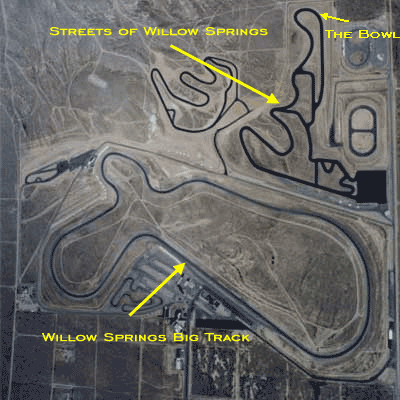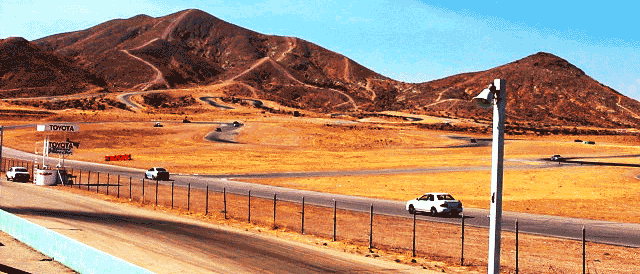|
The Track Day.
What? Another track event in less than a week?
Well, Aaron of SV offers a bloody good deal that is too hard to resist. For those who signed up for the last event, Sept 2 2006, we are given a $60 discount if we attend this event at Streets of Willow Springs. This means that we will get to run the Streets for $80. That is a deal in my books. Since I haven't driven at the Streets for a while, why not sign up.
The last time I was out here at the Streets was in December 2002. Yes, you heard me. That's more than 3 years ago. Back then I hated the Streets because it's a relatively short track and it wasn't as exciting. From 2003 through yesterday I have never set a foot in the Streets.
Streets of Willow Springs is the other track located in the Willow Springs International Raceway facility. If you look at the map below you will see the relative size comparison between the Streets and the Big Track. While the Big Track has generally been known as the track "That Requires BALLS", the Streets has been crowned as the track "That Requires Car Control Skills".

The Streets is a low-speed track. My average speed around the track is about 60mph. Yep you heard it right. It's only 60mph on average. To compare, my average speed at the Big Track is about 87mph and at Buttonwillow 13 CW about 75mph. You use mostly 2nd, 3rd gears at the Streets. One might pop into the 4th gear but not for long. To me, the Streets is like an outdoor kart track but designed for cars. You can slide around almost every corner. You hardly have time to check your gauges and you're always tackling corners.
The rather ballsy and perhaps the easiest turn of the Streets is The Bowl (refer to the map above). It's a 20 deg banking that sweeps about half a circle. You think you need to brake hard before tackling The Bowl but all you need is just lightly tap on the brakes and, swoosh, you have a NASCAR moment for about 5 seconds.
I must admit I had a lot of fun at the Streets. This track reminded me of the California Speedway Infield track, where the median lap time is about 1:20. Here at the Streets, the median is about 1:35. It's a short track with a lot of attitude and IMO it is one of the the best places for learning how to control your car. This is the place to throw your car around and learn new tricks on how to control it. Now I see why WSIR has two tracks with such an extreme driving experiences.
However, fun comes with a price. The Streets is hard on the engine and the tires. Most of the time, you're driving in the higher RPMs. Just when you upshift, you will have to downshift again. Oil and coolant temperatures will be a little higher than normal. So be warned about that. If I were to return to the Streets, I would drive with street tires and not R-comps (too expensive!).
I strongly recommend this track to track drivers from any levels. It maybe a short track but it's a memorable track.

|